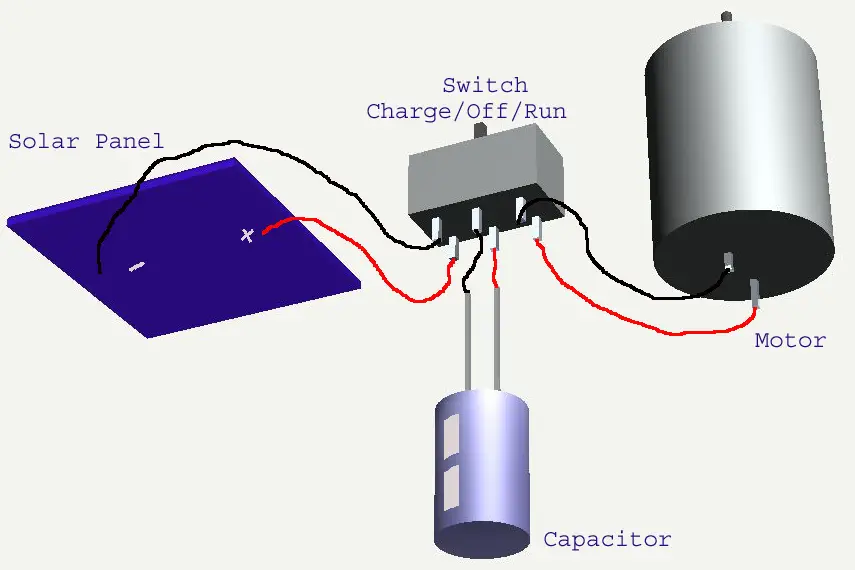
The electric motor is a crucial component in many electrical devices and systems, powering everything from cars to household appliances. Understanding its basic functioning and structure is essential for anyone interested in the field of electrical engineering or simply curious about how things work.
At its core, an electric motor is a device that converts electrical energy into mechanical energy. It does this by utilizing the principle of electromagnetic induction, where a magnetic field is generated by the flow of electric current in a coil of wire. This magnetic field interacts with another magnetic field, either permanent or electromagnetically created, to generate rotational motion.
A simple electric motor diagram consists of a few key components. These include the stator, rotor, commutator, brushes, and armature. The stator is the stationary part of the motor, usually made of a series of electromagnets arranged in a circular pattern. The rotor, on the other hand, is the part that rotates and is typically made of a permanent magnet or a combination of electromagnets and permanent magnets.
The commutator is a crucial part of the motor that ensures the direction of the current flowing through the coil of wire remains constant. It consists of a series of metal segments that are insulated from each other and connected to the coil of wire. The brushes, usually made of carbon or graphite, make contact with the commutator and supply power to the coil of wire as it rotates.
Understanding the basic diagram of an electric motor is the first step towards grasping its intricacies and potential applications. From powering vehicles to running industrial machinery, electric motors play a vital role in modern society. By demystifying their inner workings, we can appreciate the remarkable engineering behind these devices and the impact they have on our daily lives.
Understanding the Electric Motor Diagram
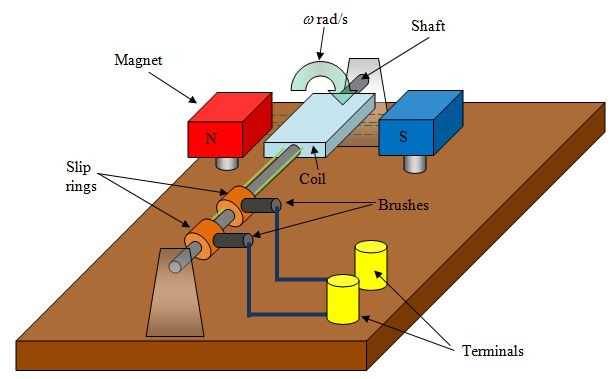
An electric motor diagram is a visual representation of the various components and connections in an electric motor. It helps in understanding the functioning and structure of an electric motor.
In a simple electric motor diagram, there are a few key components that are commonly included:
- Stator: This is the stationary part of the motor and consists of coils that generate a magnetic field. The stator is responsible for creating the rotational force in the motor.
- Rotor: The rotor is the rotating part of the motor and is connected to the shaft. It contains the magnets or electromagnets that interact with the magnetic field generated by the stator to create rotational motion.
- Shaft: The shaft provides the mechanical connection between the rotor and the external load. It transfers the rotational motion generated by the motor to the desired application.
- Brushes: Brushes are used to establish electrical contact with the rotor. They allow the flow of electrical current to the rotor, enabling the creation of the magnetic field necessary for rotation.
- Commutator: The commutator is a rotating switch that controls the flow of current to the rotor. It ensures that the current changes direction at the right time to maintain continuous rotation.
The electric motor diagram also includes wires and connections that depict the electrical circuit of the motor. These connections vary depending on the type of motor and its specific configuration.
Understanding the electric motor diagram is important for troubleshooting and maintenance purposes. By referring to the diagram, one can identify faulty components, check connections, and ensure proper operation of the motor.
Components of an Electric Motor
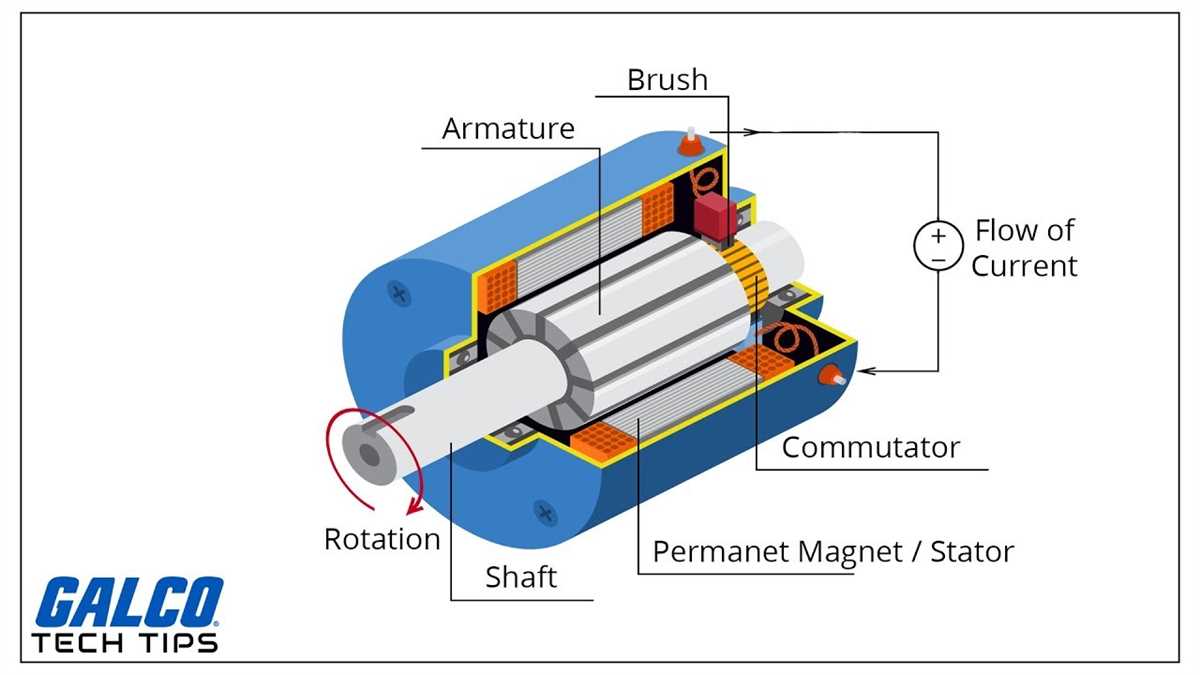
An electric motor is a device that converts electrical energy into mechanical energy. It consists of several components that work together to generate rotational motion. These components include:
- Stator: The stator is the stationary part of the electric motor. It consists of a cylindrical frame and contains the winding made of insulated copper wire. The stator creates a magnetic field when an electric current passes through its winding.
- Rotor: The rotor is the rotating part of the motor. It is made up of a shaft and a set of electromagnets. The rotor is placed inside the stator and is free to rotate. When an electric current is passed through the rotor’s electromagnets, it interacts with the stator’s magnetic field, causing the rotor to rotate.
- Commutator: The commutator is a device that helps in the reversal of current flow in the rotor’s electromagnets. It consists of a set of copper segments connected to the rotor’s winding. As the rotor rotates, the commutator ensures that the current flows in the right direction to maintain the rotation.
- Brushes: The brushes are spring-loaded conducting devices that make contact with the commutator. They supply electrical current to the rotor’s electromagnets through the commutator. The brushes are made of carbon or graphite, which have low resistance and can withstand high temperatures generated during the motor’s operation.
- Bearings: The bearings are mechanical components that support the rotor’s shaft and allow it to rotate smoothly. They reduce friction between the moving parts of the motor and help in maintaining the alignment of the rotor and the stator.
These components work in synergy to convert electrical energy into mechanical rotation, making electric motors an essential part of various industrial, commercial, and residential applications.
The Working Principle of an Electric Motor
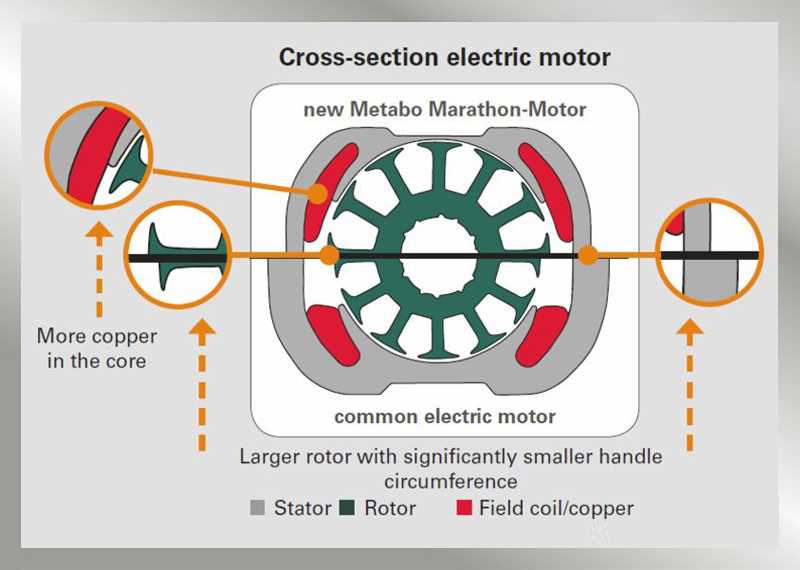
An electric motor is a device that converts electrical energy into mechanical energy. It operates based on the principle of electromagnetism, where the interaction between a magnetic field and an electric current produces a force that causes a mechanical motion.
There are different types of electric motors, but most commonly used is the simple electric motor diagram. This type of motor consists of a coil of wire wrapped around a core, called an armature, which is placed between the poles of a permanent magnet. When an electric current is passed through the wire, it creates a magnetic field around the coil. The interaction between this magnetic field and the magnetic field of the permanent magnet produces a force, known as the Lorentz force, which causes the armature to rotate.
The direction of the current passing through the wire determines the direction of the magnetic field created. According to Fleming’s left-hand rule, if you point your thumb in the direction of the current, your fingers will give the direction of the magnetic field. This rule also applies to the motion of the armature – the direction of the force acting on it will be perpendicular to both the magnetic field and the current direction.
The rotation of the armature is further regulated by a commutator and brushes. The commutator is a cylindrical segment that is attached to the armature and acts as a switch, ensuring that the current flows in the right direction through the wire. The brushes are conductive contacts that remain in contact with the commutator, allowing the current to flow continuously as the armature rotates.
In summary, the working principle of an electric motor involves the creation of a magnetic field through the interaction of an electric current and a permanent magnet. This magnetic field produces a force that causes the armature to rotate, resulting in mechanical motion. The commutator and brushes play a crucial role in maintaining the continuous flow of current and regulating the direction of the magnetic field.
Types of Electric Motors
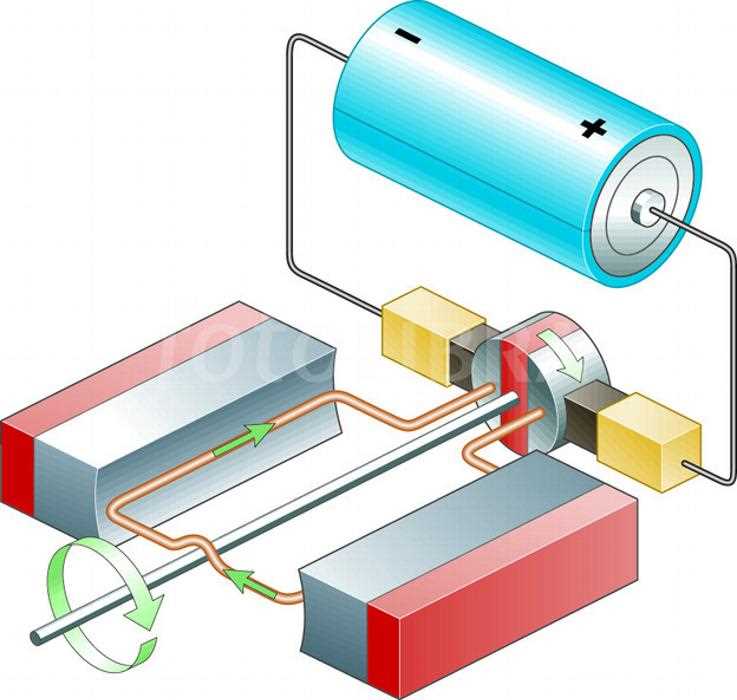
Electric motors are widely used in various industries and applications due to their efficiency and versatility. There are several types of electric motors, each with its unique design and functionality.
1. DC Motors: DC (direct current) motors are powered by a constant supply of direct current. They are commonly used in applications that require variable speed control, such as electric vehicles, robotics, and industrial machinery. DC motors can be further classified into brushed and brushless motors, depending on the type of commutation used.
2. AC Motors: AC (alternating current) motors are powered by an alternating current supply. They are widely used in both residential and industrial applications. AC motors can be divided into two main categories: induction motors and synchronous motors. Induction motors are more commonly used due to their simplicity, cost-effectiveness, and reliability.
3. Servo Motors: Servo motors are a type of electric motor that is used for precise control of position, speed, and acceleration. They are commonly used in robotics, CNC machines, and automation systems. Servo motors provide accurate and repeatable motion control and are known for their high torque and responsiveness.
4. Stepper Motors: Stepper motors are a type of electric motor that converts digital impulses into discrete mechanical movements. They are widely used in applications that require precise control over position, such as 3D printers, CNC machines, and robotics. Stepper motors provide high torque at low speeds and are capable of holding their position without the need for external power.
5. Linear Motors: Linear motors are a special type of electric motor that produces linear motion instead of rotary motion. They are used in applications that require high-speed and precise linear movement, such as magnetic levitation trains, positioning systems, and cutting machines. Linear motors offer advantages such as high acceleration, high speed, and compact design.
- Overall, electric motors play a crucial role in modern technology and are used in a wide range of applications. The choice of motor type depends on factors such as power requirements, speed control, precision, and cost. Understanding the different types of electric motors can help in selecting the most suitable motor for a specific application.
Advantages of Electric Motors
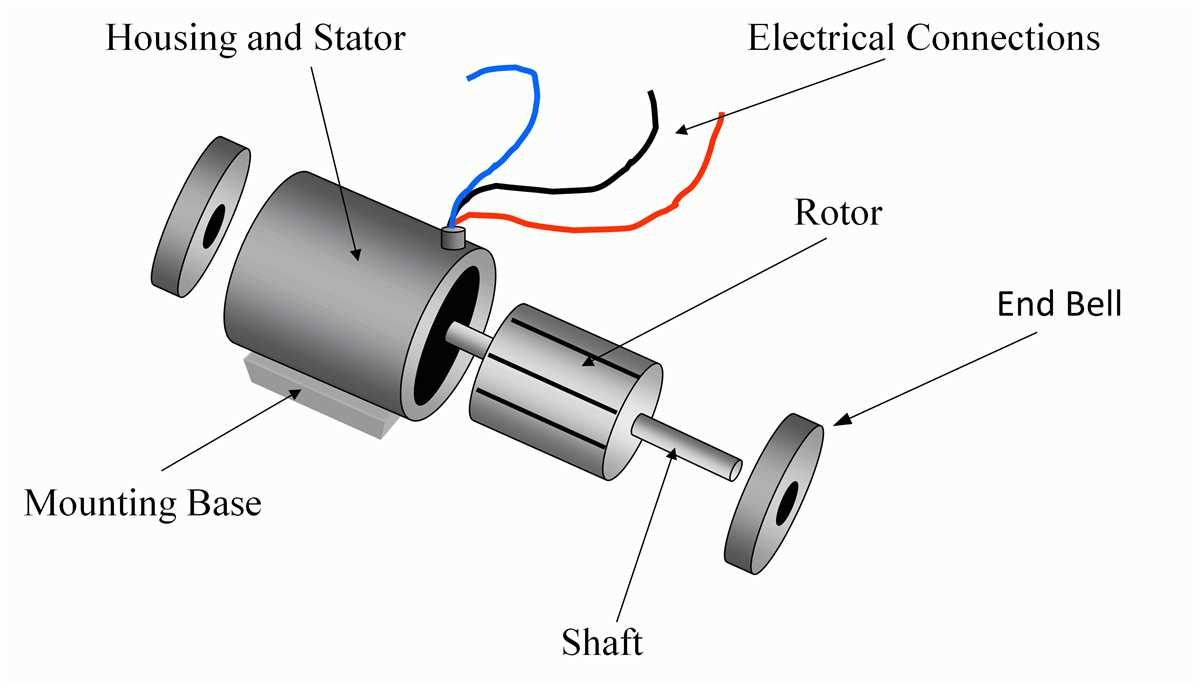
Electric motors have several advantages over other types of motors. One of the primary advantages is their high efficiency. Electric motors can convert a higher percentage of electrical energy into mechanical energy, resulting in less waste heat. This is because they do not rely on combustion processes like internal combustion engines, which have inherent losses.
Another advantage of electric motors is their compact size and lightweight design. Unlike internal combustion engines, which require multiple moving parts and complex systems, electric motors have a simpler construction. This makes them more suitable for applications where space is limited or weight is a concern, such as in electric vehicles or portable appliances.
Electric motors also have instant torque, meaning they can provide full torque as soon as they start. This allows for quick acceleration and responsive performance, making electric motors well-suited for applications that require high dynamics and precise control, such as in robotics or industrial automation.
Furthermore, electric motors produce zero emissions at the point of use. They do not release pollutants or greenhouse gases, making them environmentally friendly and contributing to cleaner and healthier air quality. This is especially important in light of the increasing focus on sustainability and reducing carbon footprints.
In addition to these advantages, electric motors are generally more reliable and require less maintenance compared to other types of motors. They have fewer moving parts, which reduces the likelihood of mechanical failures, and they do not require oil changes or complex servicing.
Common Applications of Electric Motors
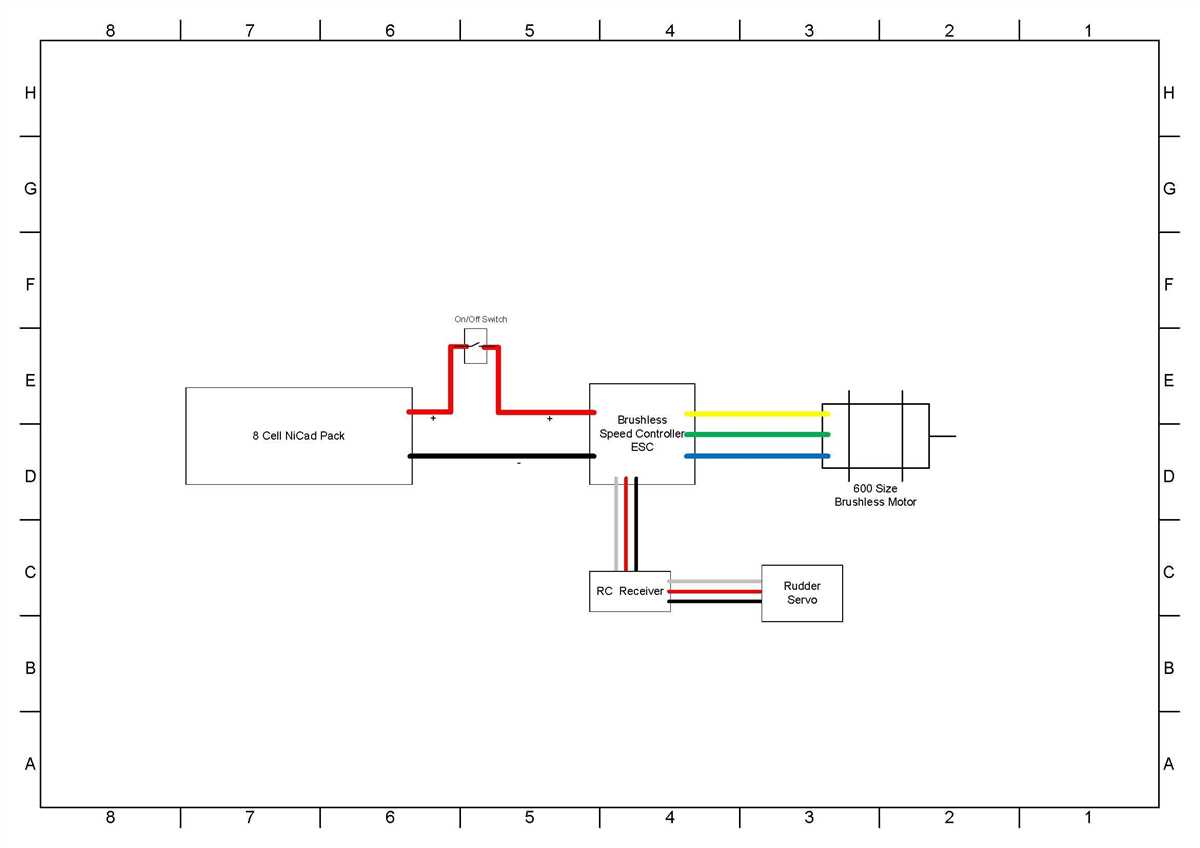
Electric motors are utilized in a variety of applications across various industries due to their efficiency, reliability, and versatility. Whether it’s powering machinery, vehicles, or appliances, electric motors play a crucial role in our daily lives.
Here are some common applications of electric motors:
- Industrial Machinery: Electric motors are extensively used in various industrial machinery such as conveyor belts, pumps, compressors, and robots. They provide the necessary power and control for smooth and precise operation.
- Automotive: Electric motors are an integral part of electric and hybrid vehicles. They are responsible for powering the vehicle’s propulsion system, including the electric drivetrain, power steering, and various auxiliaries.
- Household Appliances: Electric motors are found in numerous household appliances, including refrigerators, washing machines, dishwashers, and vacuum cleaners. They drive the rotating components and ensure proper functionality.
- HVAC Systems: Heating, ventilation, and air conditioning (HVAC) systems rely on electric motors to power their fans, compressors, and pumps. They enable the circulation of air and the efficient functioning of these systems.
- Retail and Commercial Equipment: Electric motors are used in various retail and commercial equipment such as escalators, elevators, conveyor systems, and automatic doors. They ensure smooth and reliable operation in these settings.
- Medical Devices: Electric motors are crucial components in medical devices such as surgical equipment, imaging systems, and patient care beds. They enable precise movements, positioning, and power delivery in these critical applications.
These are just a few examples of the extensive use of electric motors in various industries. They continue to advance and evolve, driving innovation and contributing to the overall progress of technology and society.
Maintenance and Troubleshooting of Electric Motors
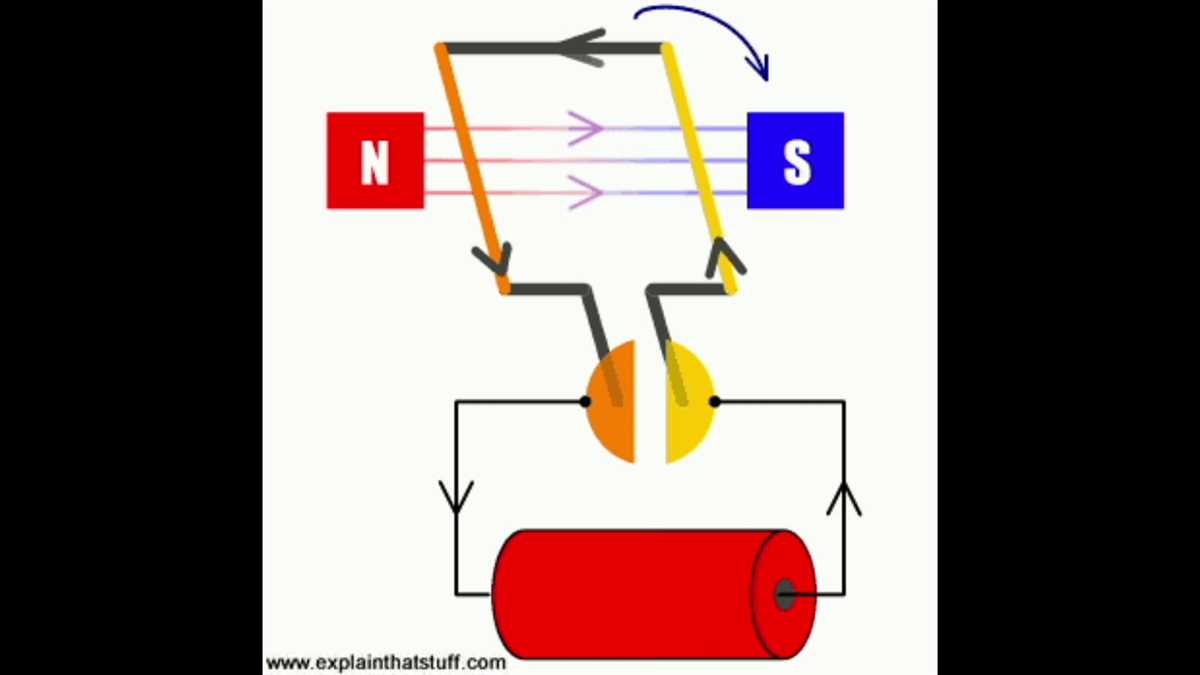
Proper maintenance and troubleshooting of electric motors are crucial for their smooth operation and longevity. Regular maintenance can prevent potential issues and ensure that the motor operates efficiently. If any problems arise, troubleshooting techniques can help identify and resolve them quickly.
Here are some important maintenance practices:
- Cleaning: Regularly clean the motor to remove dust, dirt, and other debris that can accumulate on the exterior and interior parts. Use compressed air or a soft brush to clean the motor effectively.
- Lubrication: Check and lubricate the motor’s bearings and other moving parts as per the manufacturer’s instructions. Proper lubrication reduces friction and enhances performance.
- Inspection: Periodically inspect the motor for any signs of wear, damage, or loose connections. Ensure that the electrical connections are secure and tight.
- Temperature monitoring: Monitor the motor’s temperature during operation to prevent overheating. Excessive heat can cause damage to the motor’s insulation and other components.
- Alignment and balance: Check the motor’s alignment and balance to avoid excessive vibrations, which can lead to premature wear and failure.
When troubleshooting electric motor issues, following these steps can help identify and fix the problem:
- Check power supply: Ensure that the motor is receiving proper power supply, including voltage and frequency, and that there are no loose connections or faulty circuit breakers.
- Inspect for mechanical issues: Examine the motor for any mechanical issues such as worn-out bearings, misalignment, or broken parts. Replace or repair as needed.
- Test motor windings: Use a multimeter to check the motor’s windings for continuity and insulation resistance. Any abnormal readings may indicate a faulty winding.
- Inspect motor controller: If the motor is controlled by a controller, inspect it for any malfunctioning components or settings. Reset or replace as necessary.
- Consult manufacturer’s documentation: Refer to the motor’s manual or contact the manufacturer for specific troubleshooting guidelines and solutions.
To ensure the proper maintenance and troubleshooting of electric motors, it is essential to follow the manufacturer’s guidelines and recommendations. Regular inspection, cleaning, lubrication, and temperature monitoring can prevent potential issues and extend the motor’s lifespan. Prompt troubleshooting and repair can resolve problems quickly and minimize downtime. By implementing these practices, electric motors can operate efficiently and reliably for various applications.